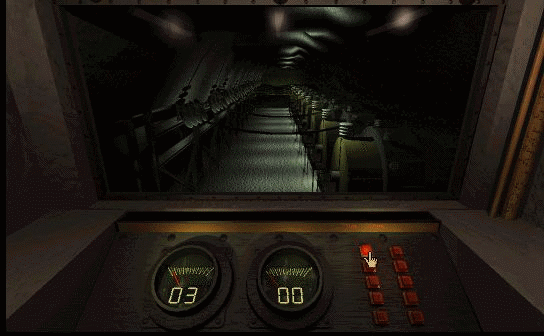MYST is a very strange phenomenon. While game mechanics were becoming increasingly complex, MYST popped out with the simplest of all user interfaces: point-and-click. It's graphics were gorgeous, certainly, but its gameplay was abysmal.
Not really.
What we actually see in MYST is one of the first successful hardcore games for casual gamers (quite a paradox there). Gamers who didn't have the patience for complex controls or the reflexes for action found this game to be a beautiful break, where your only task was exploration... until you discovered the puzzles.
 |
| Oh, God, what do I do!? |
While it became one of the most successful games ever, and spawned countless clones, none would achieve the fame of MYST.
Why is that? Perhaps it was a fluke, or perhaps it was simply a masterpiece that made all its followers pale in comparison. I am of the opinion that it was a fluke with the right idea, that is only now catching on in the market in different forms.
What I mean by that is that it opened up the market and demographic for games with a simple design, non-violent gameplay, and beautiful art. It was as unlike what came before it as a pastoral poem in a sea of limericks, and it caught the attention of everyone.
But if you ask a gamer what they thought, they often say "I bought it but I didn't like it. I couldn't get past the first island." And if you ask a non-gamer, they'll say "It's so pretty but I don't know what to do!" (Both of these are paraphrasings of actual responses I have heard.) Pastoral poems aren't everybody's cup of tea, but when all there is left is limericks, perhaps a pastoral is nice to have on your shelf, even if you couldn't get all the way through it, or even understand it.
It is perhaps one of the first "artistic" games, if anything from that era qualifies. Subtle, environment-driven storytelling is something MYST had that didn't catch on for years, but it turns out it's how games tell stories best, and it's what brings games to a new level pushing them from entertainment to art.
Part I: The Mechanics
But let's begin again with the mechanics. There isn't much to say about them because there are so few, but their lack is what makes MYST such a landmark. Despite having so little interaction, MYST is incredibly immersive.
The immersion is achieved less by giving you a million things to do, and more in its lack of HUD. There is a menu at the top, but it hides. You have a cursor -- necessary -- and beyond that is nothing but the environment. MYST does everything it can to present you with only the world it creates. Nothing feels "gamey" about this game. The only bounding box is the edge of your screen.
Even the cursor is a hand (as simple as it may be) to help with immersion, so you don't think you're using an application. The cursor is also context-sensitive, so you know where to click -- not that you need help, since the environment is clutter-free.
The intuitive nature of the controls meant there was no barrier getting involved and immersed. Your eyes, ears, and brain matter more than your fingertips and thumbs, which casual gamers and non-gamers appreciated. But it didn't feel like it was simplifying the controls; it felt like it was giving you the control scheme that was perfect for the game, and nothing more.
Today, and even back then, critics scoffed at the slideshow nature of the movement, but ultimately it was the better decision. If they made the game free-roaming, the in-game rendering would have meant much worse quality graphics, and to top it off, movement probably would have been relegated to the keyboard; a bad design choice on both counts. As slideshow-esque as it was, it was the lesser of two evils for MYST, and, in fact, added a strange appeal to the game.
Read Part II: Setting
Read Part II: Setting
No comments:
Post a Comment